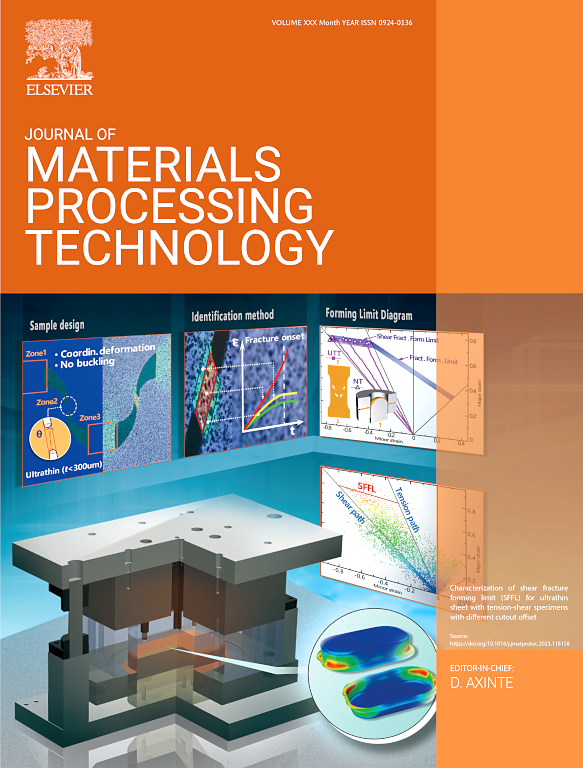Femtosecond laser ablation of zirconia-based ceramic materials: From ablation mechanism to modelling of large-scale processing
IF 6.7
2区 材料科学
Q1 ENGINEERING, INDUSTRIAL
Journal of Materials Processing Technology
Pub Date : 2024-11-17
DOI:10.1016/j.jmatprotec.2024.118668
引用次数: 0
Abstract
Femtosecond laser ablation can offer a promising solution for precise and efficient processing of zirconia-based ceramics taking advantage of ultrafast photon-material interaction. However, due to the nonlinear nature of the process, the selection of the laser parameters in 3D processing is complicated, often leading to reduced efficiency or low material integrity. Here, we address this problem through static (D2) and dynamic (grooving) testing, establishing a comprehensive understanding of the femtosecond ablation behaviour of zirconia on micro- and macro- scales. The ablation threshold of zirconia shows a significant dependence not only on the irradiation history but also on the material temperature. While the processing efficiency can be increased, a critical interpulse duration or a high heat input can facilitate a melting regime, negating the advantages of pulsed laser ablation. Morphological evolution of the surface impacts the ablation behaviour further affecting the process efficiency. Additionally, zirconia semitransparency leads to the formation of nanopores compromising residual material integrity. Based on the analysis of these elementary ablation events, we built an ultrafast computational model, simulating the surface evolution during femtosecond laser ablation with various beam-surface kinematics. Validating the model on a 3D dental crown surface underscores its potential for computer aided design-manufacturing frameworks given its efficiency.
氧化锆基陶瓷材料的飞秒激光烧蚀:从烧蚀机理到大规模加工建模
飞秒激光烧蚀利用超快光子与材料的相互作用,为氧化锆基陶瓷的精确高效加工提供了一种前景广阔的解决方案。然而,由于加工过程的非线性性质,三维加工中激光参数的选择非常复杂,往往会导致效率降低或材料完整性差。在此,我们通过静态(D2)和动态(开槽)测试来解决这一问题,从而全面了解氧化锆在微观和宏观尺度上的飞秒烧蚀行为。氧化锆的烧蚀阈值不仅与辐照历史密切相关,而且与材料温度密切相关。虽然加工效率可以提高,但临界脉冲间持续时间或高热量输入会促进熔化,从而抵消脉冲激光烧蚀的优势。表面形态的演变会影响烧蚀行为,进一步影响加工效率。此外,氧化锆的半透明性会导致纳米孔的形成,影响残余材料的完整性。基于对这些基本烧蚀事件的分析,我们建立了一个超快计算模型,模拟飞秒激光烧蚀过程中各种光束-表面运动学的表面演变。该模型在三维牙冠表面上得到验证,其高效性凸显了计算机辅助设计制造框架的潜力。
本文章由计算机程序翻译,如有差异,请以英文原文为准。
求助全文
约1分钟内获得全文
求助全文
来源期刊

Journal of Materials Processing Technology
工程技术-材料科学:综合
CiteScore
12.60
自引率
4.80%
发文量
403
审稿时长
29 days
期刊介绍:
The Journal of Materials Processing Technology covers the processing techniques used in manufacturing components from metals and other materials. The journal aims to publish full research papers of original, significant and rigorous work and so to contribute to increased production efficiency and improved component performance.
Areas of interest to the journal include:
• Casting, forming and machining
• Additive processing and joining technologies
• The evolution of material properties under the specific conditions met in manufacturing processes
• Surface engineering when it relates specifically to a manufacturing process
• Design and behavior of equipment and tools.
 求助内容:
求助内容: 应助结果提醒方式:
应助结果提醒方式:


